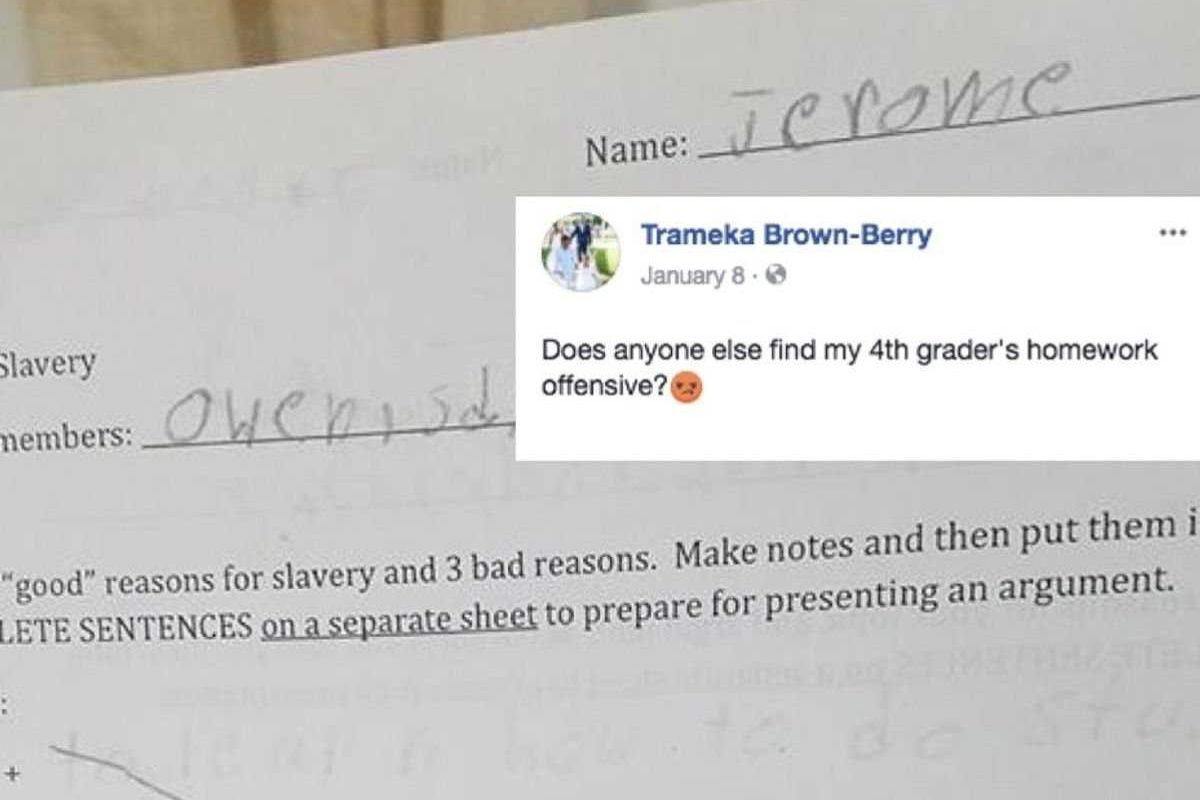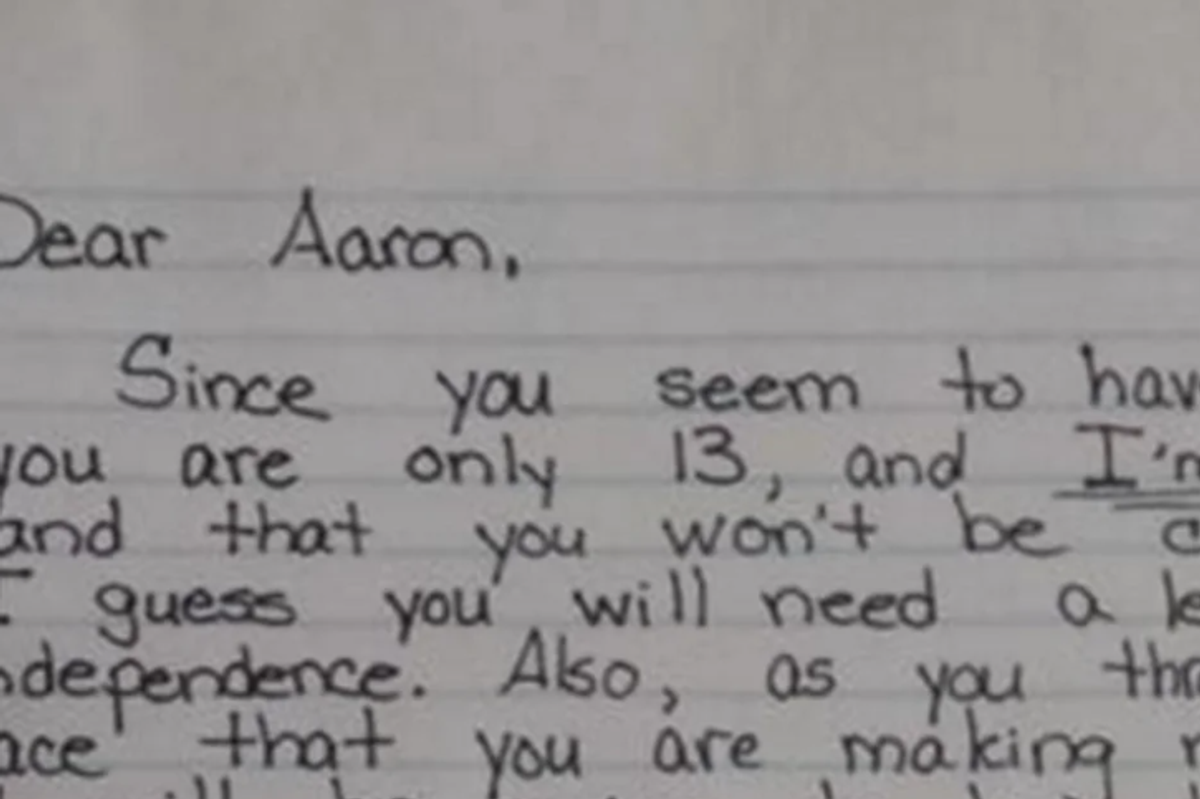Parents are people, too. Whether they subscribe to "gentle parenting" ideas or a more old-school approach, the truth is that they're just doing their best. Sometimes they get it right, sometimes they make mistakes, and quite often, it's hard for anyone to tell whether they're doing a good job until years later.
Heidi Johnson's son was 13, deeply in adolescence, and in that stage where he'd frequently lash out and defy her at every turn. In one such instance, he stubbornly told her he shouldn't have to deal with her rules and should be independent. So she wrote a strict but loving "Mom's not a fool" letter. In the letter, she wrote that because he bragged about making money, he can buy back all of the things that she had purchased for him in the past and that he would also have to pay rent.
 Teaching teenagers about real-life consequences isn't easy. Photo by Norbert Kundrak on Unsplash
Teaching teenagers about real-life consequences isn't easy. Photo by Norbert Kundrak on Unsplash
"Dear Aaron,
Since you seem to have forgotten you are only 13, and I’m the parent, and that you won’t be controlled, I guess you will need a lesson in independence. Also, as you threw in my face that you are making money now, it will be easier to buy back all the items I bought for you in the past. If you would like your lamp/lightbulbs or access to the internet, you will need to pay your own share of costs.
Rent – $430
Electricity – $116
Internet – $21
Food – $150"
She also added some additional chores that, if not accomplished, she would fine him $30.
"He came home, saw the note, crumpled it on the floor, and stormed out of the apartment. I have always encouraged him to take a walk when he is upset so that he can collect his thoughts, so when we try to talk, we are able to talk, and not just yell at each other. I do the same thing — sometimes, I just need to walk away and collect myself. I am not above admitting that. He was still livid when he got home. He decided to stage a 'sit in' in my room, where he did laugh at me and repeat, 'Really? What are you going to do? You can't take my stuff,' etc.
He was asked to leave my room, and when he could be respectful, and I was more calm, we would discuss it further. He went to his room, and after about an hour, he had removed some electronics and items I missed that he felt he should have to earn back for his behavior. He apologized, and asked what could he do to make things better and start earning items back. He earned his comforter and some clothes right back. I did leave him some clothes to begin with, just not the ones he would want to wear every day. He also had some pillows and sheets, just not his favorite ones.”
Johnson decided to post the letter in its entirety on Facebook, the way one does to friends for a laugh and connection. After all, the strategy had been a success!
However, she neglected to make it "private," and soon, comments and shares proliferated, including admonishments from strangers who thought she was a bad parent. Now she had to deal with a bigger teenager: the internet and its commentariat.
But Johnson remained level-headed and wrote another Facebook post, clarifying.
"It's out there; and I am not ashamed of what I wrote... I am not going to put my 13-year-old on the street if he can't pay his half of the rent. I am not wanting him to pay anything. I want him to take pride in his home, his space, and appreciate the gifts and blessings we have.”
She explains that he is more grateful because of it, and also that he has slowly earned back things and dealt with sacrificing others. Then she lists her very organized and succinct rules of the house:
 Kids need to be reminded, sometimes, of how much they still depend on mom. Photo by Spencer Plouzek on Unsplash
Kids need to be reminded, sometimes, of how much they still depend on mom. Photo by Spencer Plouzek on Unsplash
1 – Do your best in school! I don't expect a perfect 100%, but I do expect that you do your best and ask for help when you don't understand something.
2 – Homework and jobs need to be done before you can have screen time.
3 – Jobs are emptying the trash, unloading the dishwasher, throwing away trash you make in the kitchen, rinsing dirty dishes, making your bed daily, pick up bedroom nightly, and cleaning your bathroom once a week.
4 – You must complete two chores a day. Each day of the week with the exception of Sunday has a room that we work on cleaning. He has to pick two chores for that room. For example, if it is the living room he can choose two of the following options: dust, vacuum, polish furniture, clean windows, mop the floor.
5 – Be respectful and kind with your words — no back talking, no cussing at me.
6 – Keep good hygiene.
7 – Make eye contact when being spoken to, and be an active listener.
8 – Use proper manners.
It seems that after a long conversation about what being independent truly means, the mother and son came to a deeper understanding and patched things up.
"You know what.. this hasn't hurt our relationship. He and I still talk as openly as ever. He has apologized multiple times... And… he is trying harder," Johnson said.
Tough love is a controversial topic in parenting circles. Some say it makes kids anxious and unsafe while others insist that it's the only way to truly instill an understanding of consequences in young people. Experts say the best "tough love" enforces boundaries and consequences in order to teach tough life lessons, but is done with love and understanding rather than yelling — and it's certainly never violent. That's why it's so powerful how Johnson took the time to cool herself down and write a firm but level-headed letter.
It's also important to remember that teens who rebel aren't bad or ungrateful. The rebellion is a part of how they begin to establish their much-needed independence.
- YouTube www.youtube.com
After the initial negative reaction to her post, Johnson's story continued to spread and drew praise from other exasperated parents of teens:
"Tough love is real love, he has a chance because of you," one commenter wrote.
"Good for you! He needs to appreciate everything you do! You are doing him a favor teaching him what it is to take care of himself and learn some respect," wrote another.
"Best parent I have read about in a very long time. Kids do not rule the house, adults rule the house. Thank you very much for being a great mom," another said.
As for Johnson, her son is earning things back little by little, and "appreciating it more than he did before," she wrote.
"This came down to a 13-year-old telling his mother she had no right to enforce certain rules, and had no place to 'control' him. I made the point to show what life would look like if I was not his 'parent,' but rather a 'roommate.' It was a lesson about gratitude and respect from the very beginning. Sometimes, you have to lose it all to realize how well you really had it."
This article originally appeared four years ago. It has been updated.





 Family moving into a new home.
Family moving into a new home.  Driving Road Trip GIF by Rosen Hotels & Resorts
Driving Road Trip GIF by Rosen Hotels & Resorts 
 A woman struggles with insomniaImage via Canva
A woman struggles with insomniaImage via Canva A woman struggles with insomniaImage via Canva
A woman struggles with insomniaImage via Canva
 "
"
 Teaching teenagers about real-life consequences isn't easy. Photo by
Teaching teenagers about real-life consequences isn't easy. Photo by  Kids need to be reminded, sometimes, of how much they still depend on mom. Photo by
Kids need to be reminded, sometimes, of how much they still depend on mom. Photo by